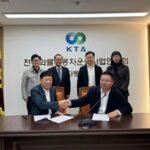Tesla has recently announced a delay in the launch of its new “affordable EV” in the United States, which is believed to be a stripped-down version of the Model Y. This decision comes after CEO Elon Musk canceled plans to build a cheaper $25,000 vehicle on a new platform in favor of focusing on the development of Robotaxi technology.
Musk’s strategy revolves around the belief that self-driving technology is on the brink of a breakthrough, making a $25,000 electric vehicle obsolete as autonomous ride-hailing fleets take over the lower end of the market. However, Tesla has yet to achieve full autonomy despite Musk’s previous predictions.
In light of decreasing sales and production slowdowns, Tesla has opted to produce more affordable EVs on existing Model Y platforms rather than investing in new production lines. These upcoming vehicles are described as “stripped-down Model Ys” with fewer features and cheaper materials, set to launch in the first half of 2025.
Recent reports suggest that the launch of the lower-cost Model Y in the US will be delayed by several months, with production slated to begin in the third quarter or early next year. Tesla aims to produce 250,000 units of the new model by 2026, aligning with its current production capacity at Gigafactory Texas and Fremont factory.
The new affordable EVs from Tesla are expected to follow a similar pattern to the updated Model 3 launched in Mexico last year, featuring removed features and cost-effective materials. While this strategy allows Tesla to optimize its existing manufacturing lines, it may impact the sales of its current Model 3 and Y lineup and reduce gross margins.
Despite the potential drawbacks, Musk is likely to justify the move as a long-term strategy to increase vehicle deployment and generate revenue through the sale of the “Full Self-Driving” package. However, the success of this strategy remains uncertain as FSD technology still requires driver supervision and has a low adoption rate for the $8,000 package.
In conclusion, Tesla’s shift towards more affordable EVs based on existing platforms reflects a strategic decision to maximize production efficiency while navigating the challenges of evolving technology and market demands.







